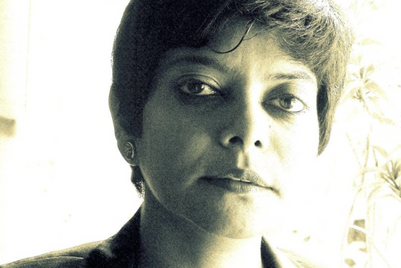
2020 was a year where consumers stayed home for the most part due to the Covid-19 pandemic. With that in mind, the fact that a ride-sharing app topped the list of local Indian brands is striking. Ola replaced Amul as the strongest Indian brand, a question asked as part of Campaign Asia-Pacific's Asia's Top 1000 Brands research.
According to Sridevi Nair, SVP of planning at Publicis Worldwide India, Ola was perceived to be a safe way to travel during the pandemic for those who didn’t have a vehicle.
She explained, “Safety became the new luxury and I think this is what shifted the game for Ola. Brands that respond in time and are flexible to deliver to the need of the hour always make a mark. And the need of the hour then with respect to travel was a safe and sanitised transportation mode. Ola focused on commuters and amped up their safety and sanitisation methods.”
Nair added that the brand also communicated safety measures to reassure the passenger which created a lot of conversation and in turn would have created a positive rub off on brand scores.
Echoing Nair’s point-of-view, Oindrila Roy, head of strategy at Essence India, added, “Ride-sharing as a category underscores consumer consciousness and has demonstrated this multiple times in the past year. It is no surprise that key brands in this category sprang into action and incorporated strict measures to ensure the safety of all drivers and passengers. When you put consumers first as key brands in this category do, every effort will be well-rewarded.”
While Nair and Roy pointed towards efforts the brand undertook during the pandemic, Kiran Khalap, MD and co-founder, chlorophyll, attributed the gain in ranking to the brand’s continuous efforts in marketing.
He said, “The new dictum of marketing is 365, not the earlier 360. Brands are successful when they are inside the customer’s mind even when the product is not in use. That is 365 days a year. Ola has reached that status in the Indian consumer’s heart.”
Poran Malani, director of operations at S4 Capital, said Ola’s increase in ranking is due to the company looking to expand to other categories and innovating.
He explained “Ola is not just a ride-sharing app, it has also during the lockdown excelled at delivery, keeping it top of mind. In addition, I think the company signifies a lot more than simply transport logistics. It has successfully moved into the overall ‘mobility’ category, especially with its new electric scooters. This is where the brand stands out, while others have simply followed and copied other models, Ola continues to develop, to invest and to show local ambition and I think that is what is bearing fruit with consumers.”
#VocalForLocal
Soon after the lockdowns ensued across the country, PM Narendra Modi also called for a #VocalforLocal movement. This was closely followed by calls for a boycott of Chinese brands that the government believed were “prejudicial to the sovereignty and integrity of India, defence of India, security of the state and public order.” This resulted in a ban of 59 mobile applications which also included short video creating platform TikTok.
The ‘clashes’ with China affected even cricket. The BCCI (Board of Control for Cricket in India) announced that its deal with Vivo, the title sponsor of the Indian Premier League (IPL) was under review before it was terminated. While Dream11 stepped in as a sponsor in 2020, Vivo returned as the title sponsor in 2021.
Despite these controversies, however, Chinese brands in the mobile phone category continued to do well. OnePlus was third in the category, followed by Oppo (fifth) and Vivo (sixth). Xiaomi climbed up seven positions to reach number 12.
Each of these brands offering smartphones at affordable prices begs the question: does India prioritise price and features over local pride?
Malani suggested the #VocalforLocal movement is quite complex.
“There was a lot of noise about this a year ago but it is more complex than the simplistic jingoistic tones around it. Consumers ultimately buy what they feel is best for them, especially when it is concerning considered purchases,” he said.
Malani added that one must also consider what local means these days when manufacturing of many foreign brands could also take place within the country.
He explained, “We benefit from the knowledge and of course the employment. When it comes to component sourcing it is also very complex these days. While something is made in India it doesn't necessarily follow that the components are.”
Khalap added that while brand purpose is a criterion for consumers, there is a catch.
“No consumer ever buys products that do not perform, however, clear the brand’s purpose is! Patagonia is the poster boy of sustainability. Ask their product engineers what the number one criterion is: it is performance. The mantra is to buy the product for performance, stay with the brand for purpose. That is what is at work here. Unless Indian brands are on par with Chinese brands on what they deliver nobody is going to buy them because their purpose is to make India Atmanirbhar.”
Nair attributed the high ranking of the Chinese brands in the market to Indian brands not responding to the opportunity.
“The TikTok audience found an alternate space on apps like MXTakatak, Chingari, Roposo, Josh etc. Had homegrown brands like Micromax, Lava, Karbonn upped their product game to match Xiaomi, OnePlus and Vivo there could have been a backlash in new purchases,” she said.
Roy surmised, “Moreover, 2020 being the year it was, people were not only more reliant on their mobile phones for work, online classes, online shopping and more, but also extremely judicious about spending more than required. Chinese brands which have been around for a few years are tried and tested, and have automatically become the go-to solution despite the resurgence of trusted Indian brands.”
Mukta Lad contributed to this article.



.jpg&h=334&w=500&q=100&v=20250320&c=1)
.jpg&h=334&w=500&q=100&v=20250320&c=1)


.jpg&h=334&w=500&q=100&v=20250320&c=1)

.jpg&h=334&w=500&q=100&v=20250320&c=1)


.jpg&h=334&w=500&q=100&v=20250320&c=1)




.png&h=268&w=401&q=100&v=20250320&c=1)


.jpg&h=268&w=401&q=100&v=20250320&c=1)
